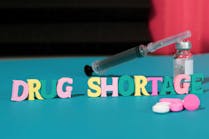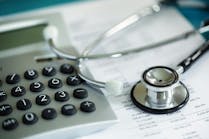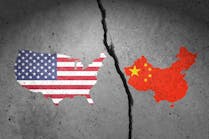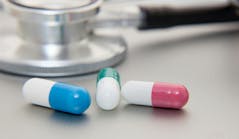RTLS cultivates accuracy, safety and security of data, people and products
Healthcare Purchasing News asked track-and-trace technology experts to share some case studies of Real-Time Location System applications at work and briefly describe how a healthcare provider organization successfully implemented an RTLS package.
“We have seen customers save millions in reduced equipment purchases, improved patient capacity by reducing wait times and increased room utilization by double digits, all of which are meaningful benefits. One area we see being top of mind for healthcare administrators is the safety and well-being of staff and patients. Healthcare has seen an increase in violence against caregivers, exacerbated by the stress of COVID-19. Many of our customers have specifically installed our Staff Duress solution using our active IR/RFID badges equipped with a call button to help aid the nursing staff. Cox Health, Branson, MO, added this layer of protection after reports of staff assaults by patients tripled this past year. Cox Health’s System Director of Public Safety and Security, calls the buttons a critical tool to curb assaults on the hospital’s staff. [See https://www.nbcnews.com/news/us-news/missouri-hospital-give-staff-panic-buttons-protect-them-violent-patients-n1280245.] Since 2016, the Midmark RTLS solution has been published in The Joint Commission’s Best Practice Library to aid in staff safety. The medical teams are the backbone of our healthcare system, and we are proud to support caregivers on a daily basis whether in terms of workflow optimization or safety.”
– HT Snowday, Midmark RTLS Solutions Inc.
“When implementing RTLS, there are many day-to-day items that need to be accounted for, so we typically recommend starting with Asset Management or Environmental Monitoring. People tracking, with the exception of some products on the market, can be a challenging first-use case because you are working with people while also trying to understand the capabilities and limitations of an RTLS system.
“For any successful program, organizations need four things:
1. Accountability/Ownership
2. Understanding of use cases implemented
3. Engagement with stakeholders
4. A robust education plan
“In the early days of the rollout, it is important for organizations to have routine meetings with their stakeholders and validate their needs and the workflows they intend to improve by using RTLS technology. You translate RTLS business value through end user engagement, so if you ignore your local userbase in the early days, it can set you up for more challenges later down the road. If implemented correctly, the benefits range from time saved on mundane tasks to lives saved by getting the right equipment to the right area at the right time.
“One example of a successful, large-scale RTLS rollout involving STANLEY Healthcare RTLS products was at RWJBarnabas Health, New Jersey’s largest integrated healthcare delivery system. RWJBarnabas Health employs 35,000 dedicated professionals in 11 acute hospitals and numerous community-based facilities throughout the state, providing treatment and services to more than 3 million patients per year.
“RTLS has transformed RWJ’s day-to-day operations, with over 16,400 tags preventing the loss of $9 million worth of devices, medication, and food. Over 2,300 staff members across four hospitals wear RTLS badges that allow them to quickly send a staff duress alert for immediate assistance. Here’s how:
• Efficiently Managing Assets (Asset Management): With more than 100,000 medical devices constantly moving around the RWJBarnabas Health network, keeping track of their location, carrying out planned maintenance and ensuring that they’re not lost – accidentally or through theft – is a major challenge. RWJ currently has close to 16,400 assets tagged in seven hospitals and saved close to $9 million in devices, medications. and food. They simply use the system to locate an asset in seconds. It also uses the RTLS system to manage inventory shrinkage. It has saved $1.7 million in capital expenditure by stopping or alerting when an asset leaves the building but also saved on the unnecessary spend to replace the lost assets.
• Protecting Vital Supplies and Care Areas (Environmental Monitoring): RWJ also deployed the same technology to monitor lab and pharmacy refrigerators and freezers, as well as food storage containers and units, for any small changes in temperature that could compromise vital drugs or food supplies. The humidity and temperature of key medical areas, such as OR suites, are constantly monitored to ensure optimum conditions for staff and patients alike.
• Tackling Workplace Violence (Staff Protection): Violence against healthcare workers is a longstanding problem for hospitals everywhere, made worse by the stresses of the COVID-19 pandemic. STANLEY Healthcare’s RTLS technology enables RWJ to provide additional protection for its people in the form of a wearable, personal alarm that shows exactly where a vulnerable employee is, triggering swift intervention by colleagues and security personnel.
• Acting on Priceless Data: As an early adopter of RTLS, RWJ also reaps the benefits of long experience, vast quantities of priceless data, and additional long-term benefits from the platform. RTLS provides a picture of how medical facilities operate, where equipment is used, and how assets and people move around.”
– Bob Metzler, Senior Product Manager, Acute Market, STANLEY Healthcare
“One of our customers recently deployed a hybrid RFID and BLE asset tracking solution in one week for biomed services in several of their hospital facilities offering more than 250 beds apiece. For a hospital of this size, deploying the solution in such a short amount of time was a huge success.
“Some of our other customers use RFID to track assets as they approach points where they can exit the building. With RFID they can sound a physical alarm that prevents the asset from leaving. Using a mixture of fixed and mobile handheld RFID readers, these healthcare facilities take quick inventory of pumps and respirators as well as track their motion through varying thresholds.
“We also have customers using BLE to track the movement of staff and patients within cancer treatment facilities and research centers. BLE technology can help focus on interactions between various personas as well as provide a more positive patient experience in non-clinical areas.”
– McLeod Williamson, Zebra Technologies Inc.
“A large healthcare facility in North Carolina implemented and operationalized CenTrak’s real-time location system to derive value from over 50 use cases including asset management, patient flow, environmental monitoring, contact tracing, staff duress and more. To date, the RTLS system has provided the facility with $40 million of quantifiable value and has become a mission-critical tool. The goal for the facility is to provide the best quality patient and family-centered care to improve the health of those who live in the communities they serve. The RTLS infrastructure covers over 4,250,000 square feet of the main campus, including over 8,000 staff members wearing location badges, and nearly all patients receive RTLS badges when they come to the facility. The use of real-time location technologies coupled with process improvements to optimize resources and streamline workflows assists in creating the ‘ultimate patient experience.’”
– Kevin Paroda, CenTrak
More on RTLS:
Tag-time: Chipping away at signal transmissions
Rooting through RTLS options, opportunities

Rick Dana Barlow | Senior Editor
Rick Dana Barlow is Senior Editor for Healthcare Purchasing News, an Endeavor Business Media publication. He can be reached at [email protected].





